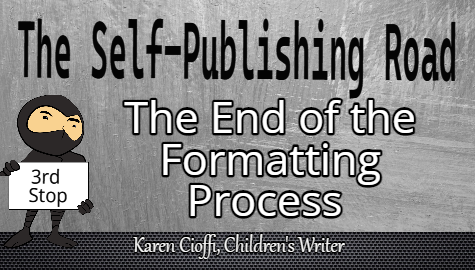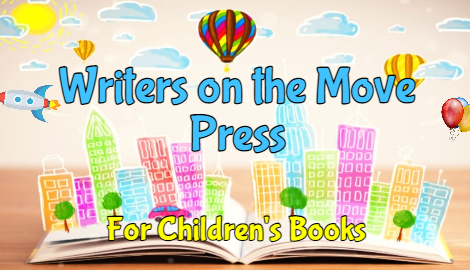
I’ve written about my process of self-publishing a book. This is the third instructional article in a four-part series.
While I’ve ghostwritten a lot of children’s books, I haven’t followed the process after that.
I have done some illustration reviews, but usually, I hand the polished manuscript to my client with a list of illustrators and formatters, and that’s it.
After a while, I realized that figuring out what to do once you have your manuscript can be a bit overwhelming. I wanted to provide my clients with more information to help them with the next step, so I decided to revise a book I had published a few years ago.
When I first wrote the book, I paid someone on Fiverr to take my Word doc manuscript, format it, design a cover, and upload it to Kindle and CreateSpace. I had no involvement whatsoever aside from writing the manuscript.
From that experience I learned that you should really hire someone or a service who knows what they’re doing. While sometimes going the cheap route can work out, sometimes it doesn’t. So, buyer beware.
Okay, back on track.
In the first article of this series, I talked about getting the cover and back cover designed by 100 Covers. They did an amazing job.
Once the cover was ready to go, I sent my fully edited manuscript along with the cover image to the book formatter. I used Book Formatters.
The book I published is nonfiction, so all I needed to do was send the manuscript in a Word doc along with the cover. They designed the interior and created a PDF of the book (a print-ready file), which they’ll send to me for review.
Once I okayed the PDF, the formatter moved on to build the ebook which are ePub and MOBI files. They also created a print version at my request.
You will need to let the formatter know which selling platform or aggregator you’ll upload your book to, such as KDP (Retailer), Smashwords (Aggregator), IngramSpark (Aggregator), or other. There are different formats for different publishing platforms.
Most authors publishing use KDP and IngramSpark. That’s what I used.
If you’re not sure what an aggregator does, this service distributes your book. In other words, they make it available for sale in a number of places, like Barnes & Noble, Amazon, and so on.
Not all aggregators have the same distribution network. IngramSpark has an extensive network with over 39,000 retailers, including libraries.
An overview of how it works:
After your manuscript is complete and fully edited:
- You hire an illustrator or book cover service to create the front cover, the back cover, and the spine for your book.
- The manuscript and cover go to the book formatter.
- The formatting is done, and you get print-ready files to upload to retailers and aggregators (like KDP and IngramSpark)
With 100 Covers, you’re also given a 3D/social image and print cover. I don’t know if other designers do this also.
What Is The Process For A Picture Book?
I asked Book Formatters what their process is and it’s pretty straightforward:
The steps to get your picture book formatted:
- You submit your finalized cover.
- You submit your fully edited manuscript in MS Word format.
- You submit your images in a separate file. The images must be a minimum of 300 DPI. Your illustrator should know this, but just in case, you can change the DPI of images at https://convert.town/image-dpi
- Provide clear instructions on where the images are to go. Also provide a description or illustration of the image and text layout.
Let’s backtrack just a bit.
You will need a quality and fully edited manuscript no matter what type of book you’re publishing.
And if you have a picture book or chapter book, you’ll need to hire a ‘good’ illustrator, one who knows what they’re doing.
Things you might add to your manuscript before getting it formatted:
- The dedication page. You can ask the formatter where to put it or simply send it to them to add.
(The book formatter will add the title page and copyright page.)
- The author page. This is a brief ‘about you’ that lets the reader know who you are. It goes at the end of your story on a separate page.
One thing I didn’t mention is the back cover copy.
This copy is an enticing description of the book. It should motivate the reader to actually BUY your book. Just be sure not to give the ending away.
You’ll give the copy to the illustrator doing your book cover.
If the illustrator has a problem with this, a good formatter will take care of it for you.
I’ve worked with a couple of illustrators who didn’t want to handle covers, front or back.
All in all, it’s not a crazy troublesome process.
Once you have a fully edited manuscript and book cover, you give it to a book formatter to turn into the print-ready files you’ll need for an ebook and a print book.
That’s it.
Then, you create an account at Amazon, IngramSpark, or any other retailer or aggregator service you want.
Next, upload the print-ready files to the services you’ve chosen. (I have more on uploading your book in Article Four.)
Making Your Book Searchable and Findable
Retailers and aggregators will need information about your book, such as a powerful description, keywords, category, price, and so on.
Read the questions and information they ask for carefully and complete everything carefully. It’s this information that will help you sell your books. It allows the distribution service to categorize your book and make it available for relevant search queries.
Once you upload your book, it can take 24-72 hours before your ebook and print book will be available for sale.
Like anything else, take it one step at a time. Knowing what to do makes it so much easier!
One Final Note
If you don’t think you can handle this process, there are self-publishing services that will put it together and publish it for you. You do need to be careful though. There are a lot of unscrupulous services.
You might look into Lulu.com and BookBaby.com.
Keep in mind that these services will offer you all kinds of services, such as editing, illustrations, covers, marketing, and so on.
Please be careful if you are considering using their services for editing, illustrations, and marketing. I’ve seen very poor-quality work from some self-publishing services.
I don’t know about Lulu or BookBaby, but do be careful.
Working with so many clients, I now offer help for children’s authors with Writers on the Move SELF-PUBLISHING SERVICE. You can check it out to see if it might be a fit for your needs.
I know this is a lot of information, and I’ve tried to make it as clear and understandable as possible. If you have any questions or I’ve missed the mark, please let me know.
You might find the first two articles in this series helpful also:
Self-Publishing a Book – Formatting (Part 1)
https://karencioffiwritingforchildren.com/2020/02/24/self-publishing-a-book-formatting/
Self-Publishing a Book – The ISBN, the Barcode, and the LCCN (Part 2)
https://karencioffiwritingforchildren.com/2020/03/01/self-publishing-isbn-barcode-lccn/
Self-publishing a book may seem overwhelming, but if you get it done in steps, it won’t feel daunting. This article discusses the ISBN, the barcode, and the LCCN. All things you’ll need for your book.

Let me take a look at your notes, outline, or draft. I’m a working children’s ghostwriter and rewriter. I can turn your story into a book that you’ll be proud to be author of.
Email me at: kcioffiventrice@gmail.com
Let’s get your story in publishable shape today!


2 thoughts on “Self-Publishing a Book – End of the Formatting Process”